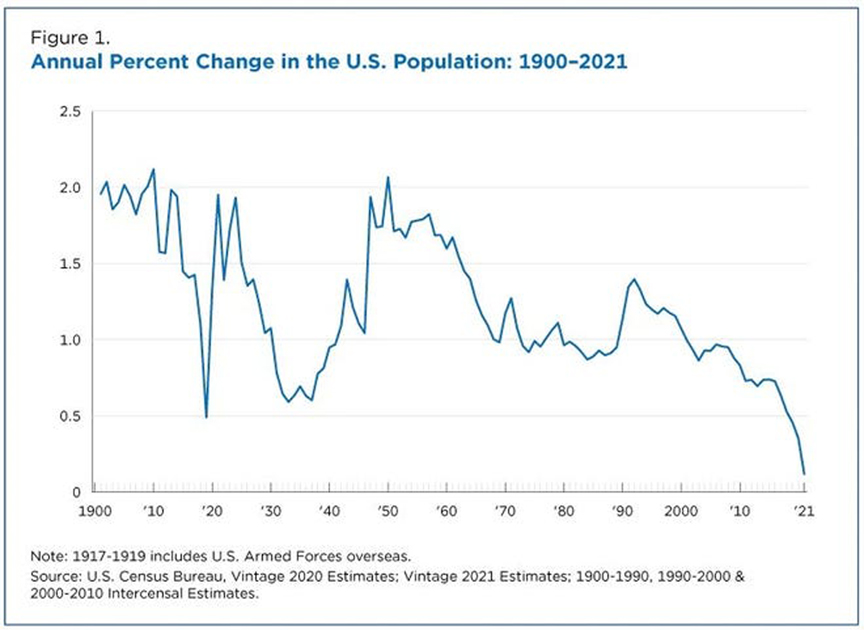Birth rate historically declined in US

New York: The pandemic COVID-19 has not only severely impacted the US economy but the birth rate has gone down to the new historic low.
The US Census Bureau’s Vintage 2021 Population Estimates, released on December 22, show that population grew by 392,665 people, or less than 0.12% of U.S. total population. The year 2021 is the first time since 1937 that the U.S. population grew by fewer than one million people, and the lowest numeric gain in total population since at least 1900, when the Census Bureau first began annual population estimates.

In 1900, the US Census Bureau started to estimate the population annually and that year too, the birth rate was even higher as compared to the 2021 year.
During the last five years, the birth rate has gone down significantly. Since the mid of 2010, the birth rate in US and global migration has become low. However, the mortality rate has been rapidly increasing during the period, and all these factors have been collectively impacting the population rate in the US.
As per US Census Bureau the trend of birth ratio has a declining trend for some time owing to the falling agriculture production, global migration and the increasing death rate of aged people. The bureau was of the view the low trend has now intensified owing to the COVID-19, which brought the population rate to the historically low.

University of New Hampshire demographer Kenneth Johnson said the decline in US growth was “stunning”.
“Of course, most of this is COVID, but not all of it,” Johnson said. “US natural increase was already at a low ebb prior to COVID with the fertility rate hitting a new record low each year and deaths steadily rising due to the population ageing,” he added.
Since April 1, 2020, the nation’s total population increased from 331.4 million to 331.8 million, the bureau’s estimates showed.
Even as the overall population growth was waning, some areas of the US saw greater increases in residents while others suffered declines, primarily through domestic movements.
Between 2020 and 2021, 33 states saw population increases, while 17 states and Washington, DC, the nation’s capital, lost population.
Mountain states in the western US saw the biggest year-over-year growth, with Idaho growing by almost 3 percent, and Utah and Montana each seeing population increases of 1.7 percent.
Washington, DC, lost 2.9 percent of its population, while New York lost 1.6 percent and Illinois lost 1.6 percent.



